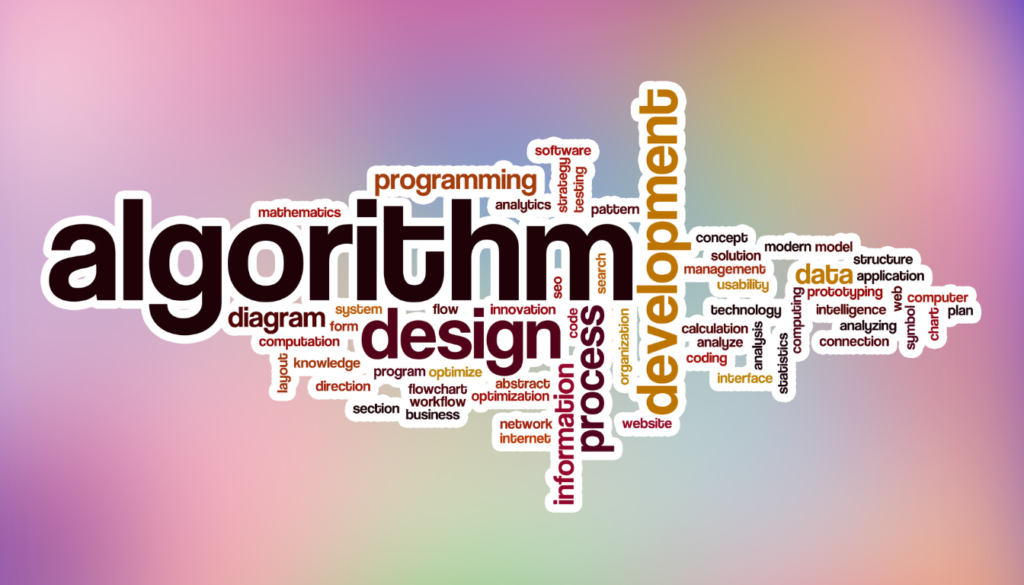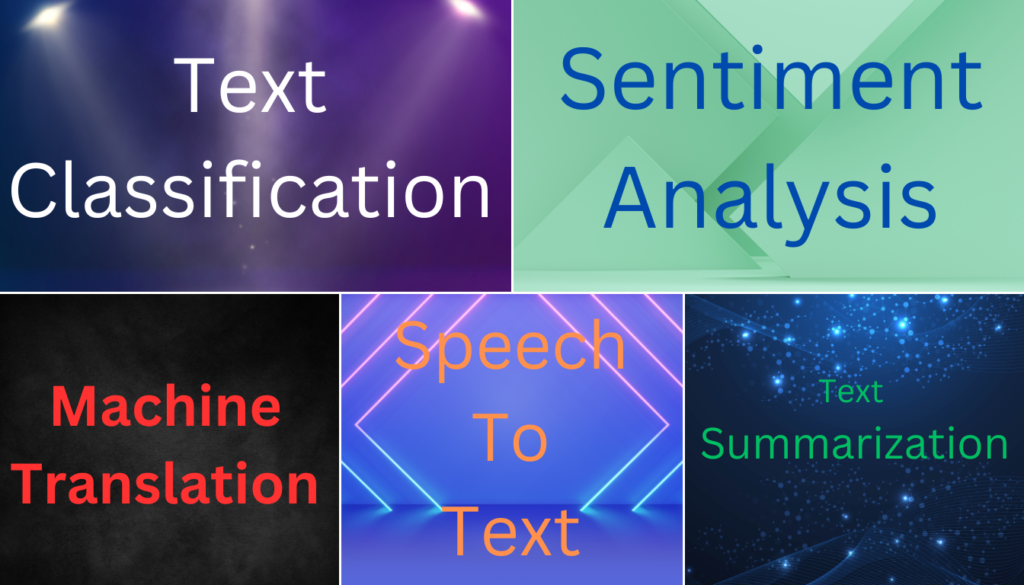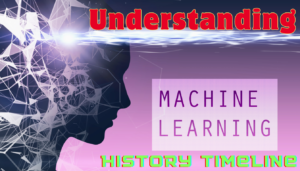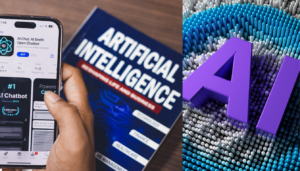Introduction
Natural Language Processing (NLP) has revolutionized the capabilities of Artificial Intelligence (AI) by enabling computers to understand and interpret human language. In the past, AI excelled in data-driven decision-making but struggled with qualitative tasks. However, with advancements in NLP, machines can now assist with writing, coding, and reasoning in specific disciplines. Companies can leverage NLP to identify valuable text data assets, incorporate AI-based language technologies for better decision-making, and unlock the transformative potential of AI.
Points to Note:
- Natural Language Processing (NLP) enhances AI by enabling machines to understand and interpret human language.
- NLP allows computers to assist with writing, coding, and reasoning in various disciplines.
- Companies can utilize NLP to identify and leverage valuable text data assets.
- NLP-based language technologies improve decision-making processes in AI.
- NLP unlocks the transformative potential of AI by bridging the gap between humans and machines.
Table of Contents
History of Natural Language Processing (NLP)
Natural Language Processing, or NLP, stands as one of the most exciting and dynamic domains within artificial intelligence. It intertwines computational linguistics and AI, aiming to bridge the gap between human communication and computer understanding. The history of NLP is a rich narrative of academic inquiry, technological breakthroughs, and an ongoing quest to replicate and interpret the intricacies of human language.
| Period | Milestone | Key Developments |
|---|---|---|
| 1940s-1950s | The Turing Test | Alan Turing’s conceptual groundwork lays the foundation for NLP. |
| 1960s | Machine Translation and the Georgetown Experiment | Early NLP models focused on translating texts between languages. |
| 1970s-1980s | Rule-Based NLP and SHRDLU | NLP models depended on complex hand-written rules to understand language. |
| 1990s | Statistical NLP and Part-of-Speech Tagging | Statistical methods became prominent, utilizing algorithms learning from data. |
| 2000s | The Rise of Machine Learning in NLP | Machine learning techniques significantly improved text processing. |
| 2010s | Deep Learning Revolution in NLP | Deep learning techniques led to more accurate language processing and generation. |
| 2020s and Beyond | Large Language Models like GPT-3 and BERT | Models provide deep contextual representations of language at scale. |
The Dawn of NLP
The origins of NLP can be traced back to the 1940s and 1950s when the foundational work of Alan Turing laid the conceptual groundwork with the Turing Test. However, it was in the 1960s when NLP as a field started to take shape, primarily through efforts in machine translation.
The 1960s: Machine Translation
Early experiments in NLP centered around translating texts from one language to another, most famously marked by the Georgetown experiment in 1954, which successfully translated more than 60 Russian sentences into English.
The 1970s to 1980s: Rule-Based NLP
The subsequent decades saw NLP models relying heavily on complex sets of hand-written rules. Systems like SHRDLU, created by Terry Winograd, demonstrated how computers could understand natural language in restricted “blocks worlds.”
The 2000s: The Rise of Machine Learning
The explosion of digital data and advancements in machine learning gave NLP a substantial push forward. Techniques such as text classification, sentiment analysis, and named entity recognition became more sophisticated.
The 2010s: Deep Learning Revolution
The introduction of deep learning techniques revolutionized NLP, leading to the creation of models that could process and generate human language with unprecedented accuracy. Key milestones include the development of Word2Vec and sequence-to-sequence learning.
The 2020s and Beyond: Large Language Models
Recently, the field has been dominated by large language models like GPT-3 and BERT, which leverage massive amounts of data and computing power to provide deep contextual representations of language. These models have set new benchmarks in tasks like translation, question-answering, and conversation.
What is Natural Language Processing (NLP)?
Natural Language Processing (NLP) is the remarkable ability of a computer program to understand and interpret human language, both spoken and written. As a crucial component of artificial intelligence (AI), NLP has expanded its applications across various domains, including medical research, search engines, and business intelligence. Through the utilization of rule-based or machine learning approaches, NLP equips computers to decipher the structure and meaning of text, facilitating the development of chatbots, voice assistants, and text-based scanning programs.
How Does Natural Language Processing Work?
Natural Language Processing (NLP) utilizes various techniques to enable computers to understand human language. Whether it is spoken or written, NLP leverages artificial intelligence (AI) to process and interpret real-world input in a way that computers can comprehend.
There are two main phases involved in NLP: data preprocessing and algorithm development.
Data Preprocessing

Data preprocessing plays a crucial role in preparing and cleaning text data for NLP tasks. It involves several steps:
Tokenization
Breaking down the text into individual words or tokens.
Stop Word Removal
Removing common words (such as “and,” “the,” or “is”) that do not carry significant meaning.
Lemmatization
Reducing words to their base or dictionary form (e.g., converting “running” to “run”).
Stemming
Reducing words to their root form (e.g., converting “cars” to “car”).
Part-of-Speech (POS) Tagging
Labeling words with their respective grammatical categories (e.g., noun, verb, adjective).
Algorithm Development

After data preprocessing, the next step is algorithm development. This involves creating the program that processes the preprocessed data. There are two main approaches:
- Rule-Based Systems: These systems rely on predefined linguistic rules and patterns to understand language. They involve explicit encoding of rules and require manual intervention for updating the rules as language evolves.
- Machine Learning: Machine learning algorithms, such as deep learning, utilize statistical methods to learn patterns and features from labeled data. These algorithms can automatically identify patterns in text data and make predictions or classifications.
NLP algorithms combine the power of data preprocessing with advanced algorithm development to enable computers to understand and interpret human language accurately.
| Data Preprocessing Steps | Algorithm Development Approaches |
|---|---|
| Tokenization | Rule-Based Systems |
| Stop Word Removal | Machine Learning |
| Lemmatization | |
| Stemming | |
| Part-of-Speech (POS) Tagging |
The combination of data preprocessing techniques and algorithm development enables NLP to unlock the potential of computers in understanding and processing human language.
Why is Natural Language Processing Important?

Natural Language Processing (NLP) plays a vital role in businesses due to the exponential growth of unstructured, text-heavy data. With NLP, computers can effectively communicate with humans, analyze text, measure sentiment, and extract valuable information. This automation allows businesses to process large volumes of unstructured data more efficiently than humans, enabling faster and more accurate decision-making processes.
NLP enables businesses to unlock the full potential of their data by structuring and processing it in a way that is actionable and meaningful. By utilizing NLP techniques such as sentiment analysis, businesses can gain insights into customer feedback, identify emerging trends, and make data-driven decisions. This helps them stay competitive in today’s fast-paced market.
One of the significant advantages of NLP is its ability to analyze vast amounts of language-based data without fatigue and with consistent, unbiased results. Machines are not limited by human limitations, allowing them to process and interpret language in a more objective manner. NLP also facilitates the identification of the most important parts of information within the data, helping businesses focus on what matters most.
As unstructured data continues to grow in size and complexity, NLP becomes increasingly crucial for businesses. By automating the analysis and structuring of data, NLP enables businesses to turn their big data into valuable insights. This empowers them to make informed decisions, optimize processes, and drive innovation.
Techniques and Methods of Natural Language Processing

Natural Language Processing (NLP) utilizes various techniques and methods to analyze and interpret human language. Syntax analysis involves understanding the arrangement of words in a sentence, utilizing techniques such as parsing, word segmentation, sentence breaking, morphological segmentation, and stemming. These techniques break down sentences into smaller parts, making it easier for computers to process and understand the structure of the text.
Semantic analysis, on the other hand, focuses on the meaning behind words. This involves techniques like word sense disambiguation, which helps to determine the correct meaning of ambiguous words, and named entity recognition, which identifies and classifies specific named entities such as people, locations, and organizations. Natural language generation is also a technique used in NLP, where computers generate human-like language based on a given input or context.
To better understand the techniques and methods used in NLP, let’s explore some examples:
Syntax Analysis
- Parsing: Analyzing the grammatical structure of a sentence.
- Word Segmentation: Splitting a sequence of words into individual units.
- Sentence Breaking: Identifying the boundaries between sentences in a paragraph.
- Morphological Segmentation: Identifying the smallest meaningful units of a word.
- Stemming: Reducing words to their base or root form.
Semantic Analysis
- Word Sense Disambiguation: Determining the correct meaning of words based on context.
- Named Entity Recognition: Identifying and classifying named entities in text.
- Natural Language Generation: Generating human-like language based on a given input or context.
These techniques enable NLP to accurately interpret language and extract valuable information from text. By understanding the syntax and the meaning behind words, computers can effectively process and analyze large volumes of textual data, allowing for a wide range of practical applications in various industries.
Current Approaches to Natural Language Processing
Current approaches to Natural Language Processing (NLP) heavily rely on deep learning, an advanced form of artificial intelligence that analyzes patterns in data to enhance language understanding. Deep learning models excel at capturing intricate relationships in complex datasets, enabling machines to grasp the nuances of human language.
However, one of the challenges in leveraging deep learning for NLP is the requirement for substantial amounts of labeled data to train these algorithms effectively. Obtaining and labeling such large volumes of data can be time-consuming and resource-intensive.
Prior to the advent of deep learning, NLP relied on two primary approaches: rule-based systems and machine learning. Rule-based systems utilized linguistic rules to process and understand natural language, while machine learning-based systems applied statistical methods to analyze text data.
| Approach | Description |
|---|---|
| Deep Learning | Analyzes patterns in data to improve language understanding |
| Rule-based Systems | Relied on linguistic rules for language interpretation |
| Machine Learning-based Systems | Utilized statistical methods for language analysis |
| Open Source Tools | NLTK, Gensim, NLP Architect – widely used frameworks for NLP development |
What is Natural Language Processing Used For?
Natural Language Processing (NLP) is an essential technology with various applications across multiple industries. From text classification to sentiment analysis, NLP enables computers to understand and interpret human language, opening up new possibilities for automation and efficient data processing. Let’s explore some common applications of NLP:

1. Text Classification
NLP can categorize large volumes of text into different classes or categories based on predefined criteria. This enables organizations to organize and analyze vast amounts of textual data more efficiently, leading to improved decision-making processes.
2. Sentiment Analysis
Sentiment analysis, also known as opinion mining, is the process of determining the sentiment or emotion expressed in a piece of text. NLP techniques can analyze customer reviews, social media posts, or survey responses to gauge sentiment and extract valuable insights for businesses.
3. Text Summarization
With the abundance of information available, text summarization using NLP techniques helps to distill large amounts of text into shorter summaries. This is especially useful in news articles, research papers, or long documents where the key points need to be highlighted.
4. Machine Translation
NLP plays a fundamental role in machine translation, enabling computers to automatically translate text from one language to another. This facilitates global communication and breaks down language barriers in various contexts, including business, travel, and international collaborations.
5. Speech-to-Text Conversion
NLP powers speech-to-text conversion, where spoken language is transformed into written text. This technology is used in voice assistants, transcription services, and accessibility tools to convert spoken words into written form, enhancing communication and accessibility for individuals.
6. Text-to-Speech Conversion
The reverse process of speech-to-text conversion, text-to-speech conversion transforms written text into spoken words. This technology finds applications in voice assistants, audiobooks, and accessibility tools, allowing individuals to consume textual information through audio.
These are just a few examples of how Natural Language Processing (NLP) is used to enhance various industries. By harnessing the power of NLP, organizations can automate processes, gain valuable insights from textual data, and improve communication between humans and machines.
Evolution of Natural Language Processing
Natural Language Processing (NLP) has rapidly evolved thanks to the increasing interest in human-to-machine communication, the abundance of big data, and the advancements in computing power and algorithms. In the past, computers relied on machine code for communication, a language that was incomprehensible to most people. However, with the development of NLP, machines are now capable of understanding and responding to human language, resulting in more intuitive interactions. NLP, alongside other AI elements like machine learning and deep learning, plays a crucial role in bridging the gap between humans and machines.
| Advancements in Natural Language Processing | Impact |
|---|---|
| Increased interest in human-to-machine communication | Enables more natural and intuitive interactions with machines |
| Availability of big data | Provides a vast amount of language-related information for training and optimization |
| Powerful computing | Allows for faster and more complex language processing tasks |
| Enhanced algorithms | Improves the accuracy and efficiency of language understanding and generation |
NLP Applications
Natural Language Processing (NLP) is a powerful tool that, in conjunction with text analytics, allows for the extraction of meaning and structure from large volumes of text. This combination has a wide range of applications, including:
Investigative Discovery
NLP helps in uncovering relevant information from a massive amount of textual data, enabling investigators to make connections and identify patterns quickly. By analyzing documents, emails, chat logs, and social media posts, NLP assists in investigations across various domains.
Subject-Matter Expertise Classification
NLP can evaluate the expertise level of individuals in specific subject areas by analyzing their written work or contributions. This classification helps organizations identify subject-matter experts and utilize their knowledge effectively.
Social Media Analytics

NLP is extensively used to analyze social media content, enabling businesses to monitor sentiment, track trends, and understand customer feedback. By examining tweets, posts, and comments, NLP provides valuable insights into consumer opinions and preferences.
Spam Filtering
NLP algorithms can effectively identify and filter out spam emails by analyzing text patterns, sender information, and other relevant features.
Speech-to-Text Conversion
NLP allows for accurate conversion of spoken language into written text. This technology is utilized in various applications, such as transcription services and voice assistants.
Website Search
NLP enhances the search functionality of websites by enabling more accurate and context-aware search results. By understanding user queries and web content, NLP improves the overall search experience.
Email Categorization
NLP can automatically classify and categorize emails based on their content, allowing users to efficiently organize and prioritize their messages.
Moreover, NLP’s potential goes beyond just these applications. As technology progresses, cognitive and AI applications, such as natural language understanding (NLU), continue to expand the possibilities of NLP in various industries.
Example Application: Sentiment Analysis in Social Media
A popular application of NLP in social media analytics is sentiment analysis. This technique involves determining the sentiment of a given text, whether it is positive, negative, or neutral. By analyzing social media posts, comments, and reviews, sentiment analysis provides businesses with valuable insights into customer opinions, sentiments, and satisfaction levels.
| Sentiment | Example |
|---|---|
| Positive | “I absolutely loved the new movie! It had such a heartwarming storyline.” |
| Negative | “The customer service at XYZ company was terrible. They were rude and unhelpful.” |
| Neutral | “The weather forecast for tomorrow is 25 degrees Celsius with a chance of rain.” |
By analyzing sentiment in social media data, businesses can gain insights into product reception, brand reputation, and customer satisfaction. These insights can inform marketing strategies, customer support improvements, and overall business decision-making.
AI Tools Utilizing Natural Language Processing (NLP)
| AI Tool | NLP Use |
|---|---|
| Alexa | Voice interactions and command processing. |
| Google Translate | Real-time language translation and interpretation. |
| IBM Watson | Enterprise-level AI solutions across various industries. |
| Siri | Voice-activated assistance for Apple devices. |
| Chatbot | Automated customer service and engagement. |
| Grammarly | Writing enhancement and error correction. |
| GPT-3 | Advanced text generation and context understanding. |
Conclusion
Natural Language Processing (NLP) plays a pivotal role in enhancing artificial intelligence (AI) by enabling computers to understand and interpret human language. With advancements in NLP, AI systems have become more proficient in qualitative tasks, revolutionizing industries ranging from healthcare to customer feedback analysis.
By leveraging NLP, businesses can effectively process and extract valuable insights from large volumes of unstructured data, enabling better decision-making processes. NLP enables machines to analyze text, measure sentiment, and categorize information, surpassing human capabilities in terms of efficiency and consistency.
As technology continues to evolve, NLP will continue to facilitate effective communication and interaction between humans and machines. It has the potential to revolutionize the way we interact with AI systems, opening up new possibilities for seamless human-machine collaboration. With its transformative capabilities, NLP is set to further propel the growth and adoption of artificial intelligence across industries.
FAQ on Natural Language Processing (NLP)
What is Natural Language Processing (NLP)?
NLP is a branch of artificial intelligence that focuses on the interaction between computers and humans through natural language. The ultimate objective of NLP is to read, decipher, understand, and make sense of human languages in a valuable way.
How does NLP work?
NLP combines computational linguistics—rule-based modeling of human language—with statistical, machine learning, and deep learning models. These models are used to process and analyze large amounts of natural language data with the goal of understanding and making sense of human languages.
What are the common applications of NLP?
Common applications of NLP include text translation, sentiment analysis, speech recognition, chatbots, personal voice assistants, and more. It’s used in various industries for customer service, healthcare, legal interpretation, and creating content at scale.
What are the biggest challenges in NLP?
Some of the biggest challenges include understanding context, managing ambiguities inherent in human languages, sarcasm, humor, and idiomatic expressions. Additionally, building NLP systems that can handle the vast variety of languages and dialects is particularly complex.
How is NLP changing with advances in AI?
Advances in AI, particularly deep learning, have significantly improved the accuracy and efficiency of NLP. Models like BERT and GPT-3 are able to understand context better and generate human-like text, which opens up new possibilities for natural language understanding and generation.
What is the future of NLP?
The future of NLP includes continual improvement in understanding context and nuance in communication. This will lead to more advanced chatbots, more accurate translation services, and more effective voice-controlled assistants. There is also a strong push towards NLP that is fair, ethical, and devoid of biases.




I enjoyed reading this article. Thanks for sharing your insights.
I love how Ghibli-style visuals can turn simple ideas into magical scenes. Tools like Ghibli AI make it easy to bring that enchanting art to life without advanced skills. A great resource for creative minds!
Great breakdown of MCP’s potential in AI integration! The MCP AI platform (MCP AI) offers a solid resource hub for developers looking to enhance their workflows and security with MCP tools.
Great breakdown! It’s crucial to know the odds when playing slots or live games. If you’re looking for a platform that blends thrill with top-tier security, give PH987 jili a try – their app makes it easy to start winning.
Interesting points about mobile gaming security! It’s crucial to prioritize user experience and protection. Seeing platforms like game ph login focus on seamless mobile interfaces is a smart move for engagement & trust. Good analysis!
That’s a really interesting point about game design encouraging replayability! I’ve been checking out jlboss login and their variety of slots definitely keeps things fresh – feels like a whole entertainment hub, not just one game! Good stuff.
Understanding baccarat patterns can give you an edge, especially when managing risk and reward. Platforms like Swerte offer immersive experiences that let you test these strategies in real-time-just don’t forget to play smart.
It’s fascinating how easily accessible gaming has become – platforms like jkboss really lower the barrier to entry. Understanding impulse control is key, especially with so many options like those slots & live games! It’s about mindful fun.
Interesting analysis! Mobile gaming is definitely changing the landscape. Convenient access is key, and apps like jkboss seem to be streamlining that-quick logins & easy play are a huge plus for busy players!
Solid analysis of the upcoming match! Seeing platforms like philwin online casino app cater to local preferences with options like GCash is smart – accessibility is key for engagement, both on the pitch & online! Good read.
Really insightful article! Seeing platforms like 2jl app focus on the Philippine market with easy GCash deposits is great. Makes getting started so much simpler – especially on mobile! Definitely a step up for online gaming. 👍
RTP analysis is key to enjoying slots – knowing the odds really changes things! Seeing platforms like 365 jili game prioritize security & KYC is a huge plus for peace of mind while playing. Definitely a good sign for a trusted experience!
That’s a fascinating take on longshot potential! Considering platform security is key, I’ve been checking out jl boss games link – their verification process seems solid. Good insights on spotting value!
It’s great seeing platforms embrace both entertainment and responsible gaming! The ‘swerte’ & adventure vibe of sites like 987ph app casino is appealing, but remember to set limits & play for fun. Prioritizing security, like they emphasize, is key too! ✨
Solid analysis! Seeing more Asian platforms like legend link vip offering localized payment options (GCash, Maya) is key for growth. Accessibility matters, alongside solid game variety! Good read.
Solid article! Thinking about bankroll management & game selection is key, especially with platforms like taya99 games offering so many options. Easy access via the app is a huge plus for consistent play!
Ôi dồi ôi, lại tìm link vào B88 à? Mấy cái link cũ hay bị chặn lắm, dùng link vao b88 này xem có được không nhé. Chúc may mắn nha!
I enjoyed reading this article. Thanks for sharing your insights.